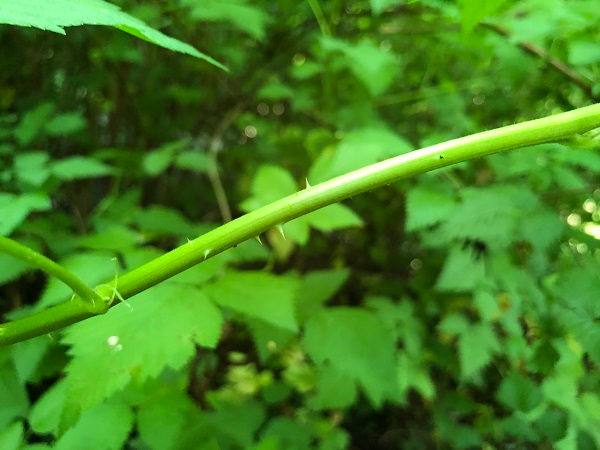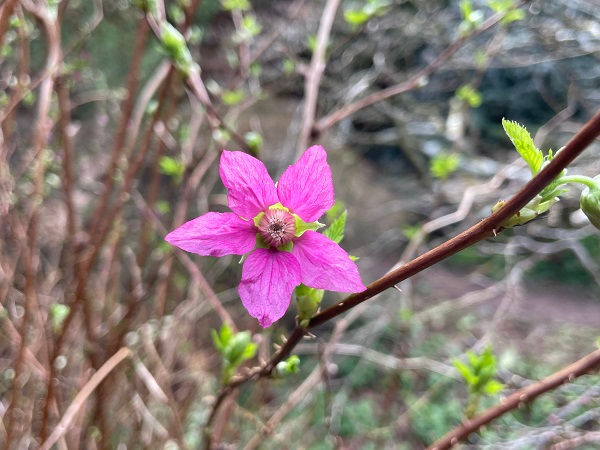Salmonberry - Rubus spectabilis
- The Foraging Course Company
- Feb 12
- 2 min read
Updated: Feb 13

Edible shrub - novice Season - present all year. Flowers: spring. Fruits: summer Common names Salmonberry, joffelberry
Scientific name meaning: Rubus is from the Latin Rubra, meaning red. Spectabilis is also Latin and means remarkable, in relation to this plant's flowers
Habitat  Found in wooded or shaded areas, particularly near rivers and streams. It prefers moist soils. Introduced from North America by the Victorians as a cover plant for game birds, it has now naturalised in the UK. It is particularly prevalent in Scotland. |
Overall structure  Salmonberry has thin, erect, woody stems that are 1-4m tall. The lower part of the stem is often bare, with the foliage at the uppermost aspect. It s most often found as a thicket. |
Leaves  The bright-green leaves are trifoliate - having three leaflets. The base pair of leaflets have a large lower lobe, giving the leaf an almost palmate appearance. The leaflets' edges are toothed. A small amount of prickles are present on the underside of the leaf. |
Stem  The round stems are thin and erect. The new growth is bright green and ages to become brown and woody. The stems have more aggressive prickles than a raspberry, but considerably fewer than most species of blackberry. The cross section is circular. |
Flowers  The flowers are bright pink in colour with five large petals and clearly visible stamens. The flowers appear in spring. |
Fruit  The aggregate fruits are made up of many drupelets - like a blackberry or raspberry - and are orange or red. The remains of the male reproductive parts are clearly visible between the fruit and sepals. When the fruit is removed, the central core (receptacle) remains attached the plant, like a raspberry. They ripen in summer. |
Possible lookalikes  Could easily be confused with raspberry (Rubus idaeus), pictured, however this has much duller fruit and pinnately compound leaves. Could also be confused with cloudberry, but this is a low-growing plant with palmately lobed leaves. Both of these plants also have edible fruits. |
Use as a food The fruit can be eaten raw or cooked and is thought to be more sweet and strongly flavoured in warmer summers. It has a pleasant tang.
Young stems can be peeled and eaten raw or cooked. The leaves can be used to make an infusion (tea) and the flowers can be eaten raw Use in herbal medicine and medicine Salmonberry has been used to treat stomach complaints, burns, and labour pains, as well as being used as an analgesic and astringent
If you are suffering from any ailment or need medical advice, please see your General Practitioner.
Hazards None known
Other uses Can be used to prevent soil erosion on river banks Importance to other species Provides a food source for pollinators, particularly bees, birds and small mammals
Always stay safe when foraging. You need to be 100% sure of your identification, 100% sure that your foraged item is edible, and 100% sure that you are not allergic to it (it is good practice to always try a small amount of any new food you are consuming). If in doubt, leave it out!







Comments